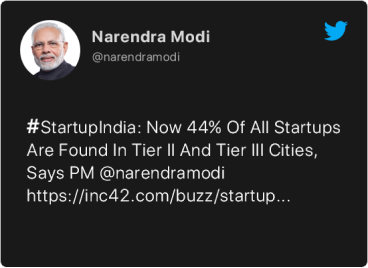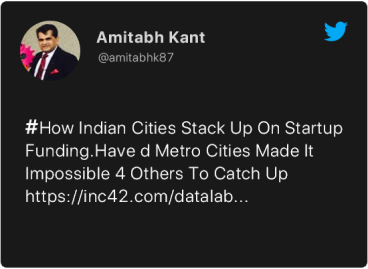
This is in line with the government’s target to issue 11 Cr farmer IDs in the country by 2026-27
The MoS said that the government is using AI and IoT-enabled systems to improve crop productivity, sustainability and address other challenges in the sector
This follows the Union Cabinet in September 2024 approving the INR 2,817 Cr Digital Agriculture Mission for the creation of a DPI to supercharge the agriculture sector
Minister of State (MoS) for agriculture Ramnath Thakur informed the Parliament that more than 4.85 Cr farmer IDs have been generated under the Digital Agriculture Mission, as of March 28.
This is in line with the government’s target to issue 11 Cr farmer IDs in the country by 2026-27.
An AgriStack Farmer ID, a unique digital identifier linked to Aadhaar and land records, facilitates easier access to government schemes, subsidies, crop insurance, and Kisan Credit Card (KCC) loans, streamlining benefits and promoting financial inclusion for farmers.
Thakur further said that the government is also planning the pan-India rollout of the digital crop survey, starting June 2025. He added that while the survey was conducted in 436 districts in the Kharif season (between June-October) last year, 461 were covered as part of the survey during the Rabi season (mid-November to December).
The MoS also said that the government is using artificial intelligence (AI) and IoT-enabled systems to improve crop productivity, sustainability and address other challenges in the agricultural sector.
He also informed the Lok Sabha that the government has launched AI-powered chatbot, Kisan e-Mitra, to assist farmers with responses on various queries.
Thakur said that the Centre has deployed AI and machine learning, under the National Pest Surveillance System, to detect pest infestation in crops.
In addition, the government claims to provide technical and financial support to all the states and union territories for smooth implementation of the digital agriculture mission.
India’s INR 2,817 Cr Digital Agriculture Mission
In September last year, the Union Cabinet approved the INR 2,817 Cr Digital Agriculture Mission for the creation of Digital Public Infrastructure (DPI) to supercharge the Indian agriculture sector.
The Digital Agriculture Mission is aimed to serve as an umbrella scheme to support digital agriculture initiatives, such as creating DPI for agriculture, implementing the Digital General Crop Estimation Survey (DGCES), and building other IT initiatives..
Out of the total outlay, the Centre will contribute around INR 1,940 Cr to leverage emerging technologies such as data analytics, AI and remote sensing in agriculture.
Modelled on the lines of other DPIs such as Aadhaar and unified payments interface (UPI), the mission will be built on three key pillars – AgriStack, Krishi Decision Support System (DSS), and Soil Profile Maps.
Powering India’s Agriculture With Tech
Agriculture, despite contributing 18% to India’s gross value added (GVA) and employing nearly half of India’s workforce, continues to be plagued by primitive methods of tilling, inefficiency and low yields.
Looking to change this, agritech startups are leveraging emerging technologies such as IoT and AI to supercharge the sector. The homegrown agritech startup space counts the likes of players such as AgroStar, Agrim, Arya.ag, DeHaat, BigHaat and BharatAgri among other disruptors.
Collectively, these startups have secured more than $2.4 Bn since 2014, as per Inc42.




 Fintech
Fintech Travel Tech
Travel Tech Electric Vehicle
Electric Vehicle Health Tech
Health Tech Edtech
Edtech IT
IT Logistics
Logistics Retail
Retail Ecommerce
Ecommerce Startup Ecosystem
Startup Ecosystem Enterprise Tech
Enterprise Tech Clean Tech
Clean Tech Consumer Internet
Consumer Internet Agritech
Agritech




























